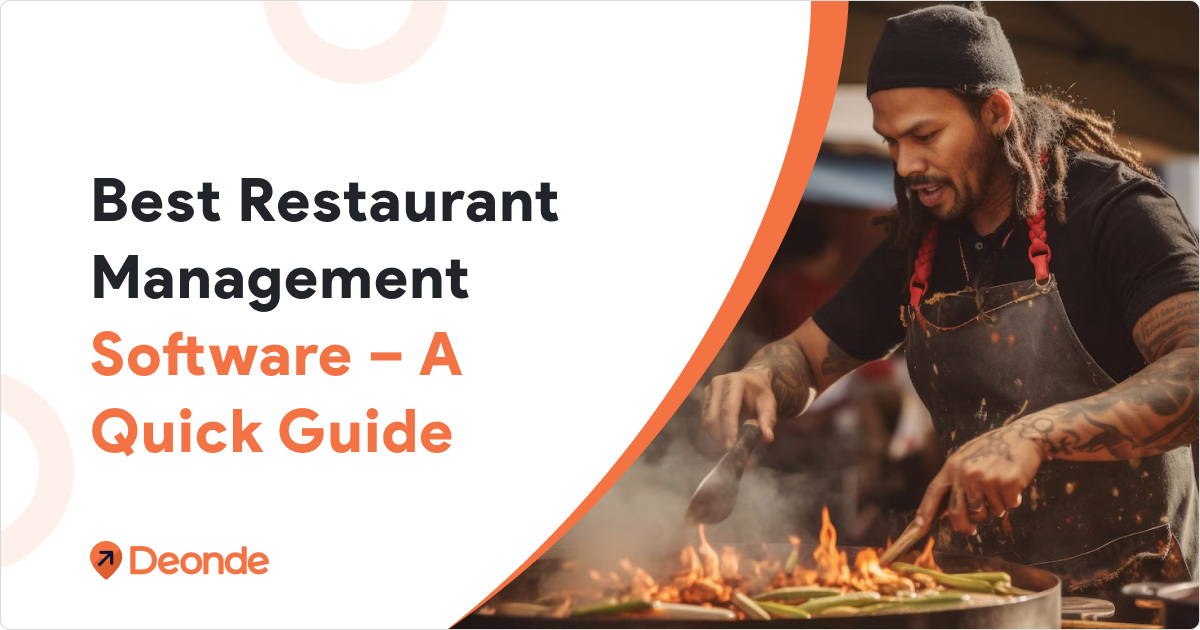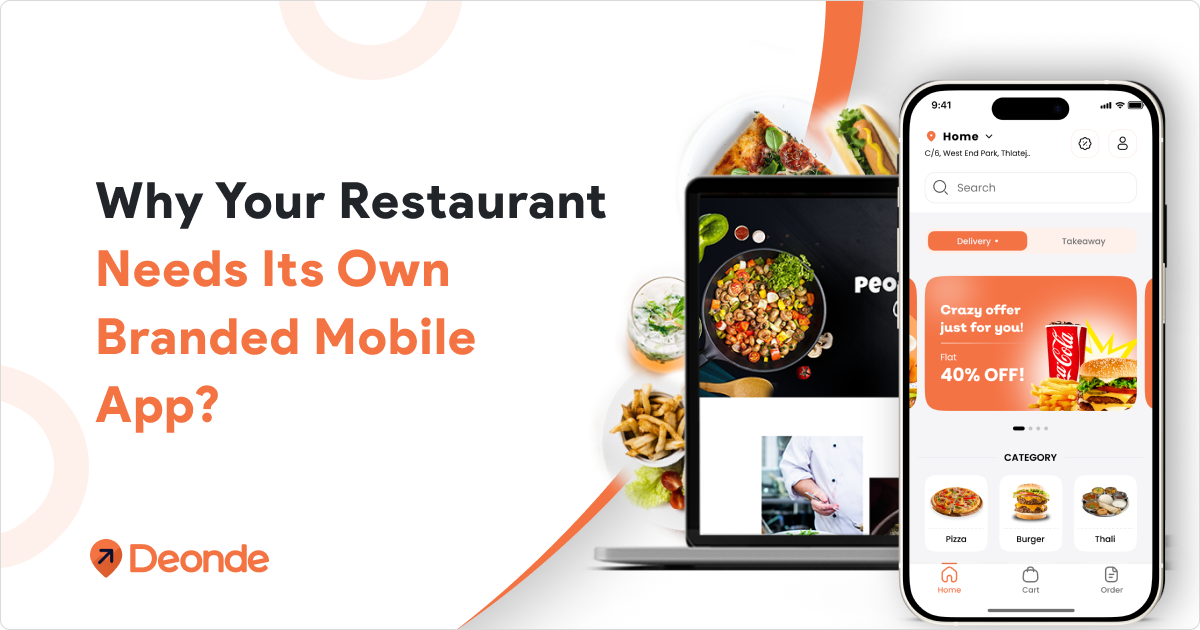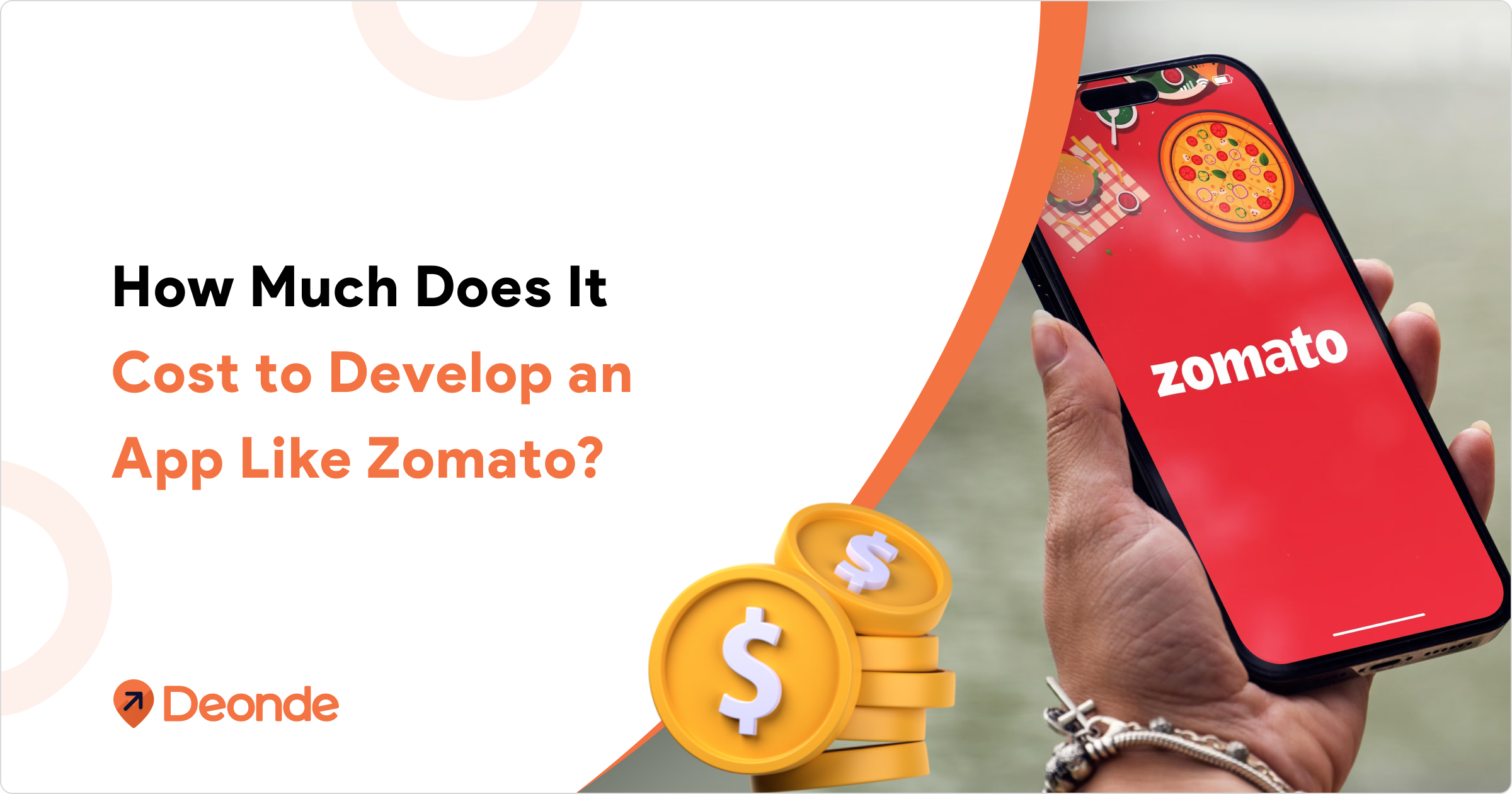All businesses are taking the digital route because everybody has seen its advantages. The restaurant business is no exception, as more and more restaurants are opting to have restaurant management software for the ease of their business.
The fast pace of the modern restaurant business calls for quick and efficient wait service. Ever since the technology of restaurant management software, Keeps on upgrading to make a smooth and organized functioning process for all operations but across keeps changing as industry standards, level up from a competitive edge. This article is dedicated to discussing why it’s important for a professional restaurant and how you can best choose the right software solution.
What Is Restaurant Management Software?
Restaurant management software (RMS) is an all-in-one digital solution designed to help restaurant owners and managers organize their day-to-day activities. In addition to a typical POS system, it may include things like inventory management, support for employee scheduling, and customer relationship management (CRM). Restaurant management software makes it possible for companies to run better and faster especially as they integrate these functions on a single platform and can make much more data-driven decisions.
A regular point of sale (POS) software focuses on the behind-the-scenes jobs of a restaurant. It focuses on sales, accounts, inventory, and employee management.
On the other hand, restaurant management software is all-encompassing software to cover the entire restaurant business. It doubles down as the POS software as well as the software for online food ordering, table reservations, order management, and everything else related to the management of the restaurant. Business owners can also manage multiple restaurants located at multiple locations using such software.
Why Do You Need Restaurant Management Software?
Streamlined Operations
Restaurant management software automates many time-consuming tasks, allowing staff to focus on providing excellent customer service and preparing quality food. For example, it can automatically update inventory levels when an order is placed, saving time on manual stock counts.
Enhanced Customer Experience
Restaurant management software that offers quick order processing and one-to-one service via CRM works wonders on enhancing customer satisfaction. This includes customer preferences, which means in future your staff will be able to make personalized advises based on previously stored data.
Better Inventory Management
The real-time tracking and forecasting tools prevent stockouts, reduce waste, and also optimize your inventory levels. The software can even notify you when stock is running low, and it will also recommend reordering quantities based on historical usage so that you never carry too much excess inventory.
Data-Driven Decisions
Comprehensive reporting and analytics provide valuable insights into your business performance, enabling informed decision-making. You can easily track which menu items are most popular or which times of day are busiest.
Compliance and Security
Modern restaurant management systems help ensure compliance with food safety regulations and protect customer data. They can track food temperatures, and expiration dates, and maintain secure customer databases.
How To Choose The Best Restaurant Management Software?
If you want the shortest answer to the above question, the answer is, “It depends.” It depends on two things: your requirements and your budget.
Let’s discuss your requirements first. Your requirements completely depend on your business model.
Your Unique Requirements
Suppose, you have a restaurant that caters all types of cuisines all day long and you have plenty of tables for customers. In such a case, your requirements will differ from a fast food joint or a sandwich deli. A fast food joint or a sandwich deli may not need a table reservation system. It is also quite possible that they run the business with the help of one or two family members and do not require an employee management system. And, they may not require the order management system to deal with a variety of orders and the order queue, too. So, as a business owner, you have to prepare a list of all of your requirements before choosing the best restaurant management software for your business. To the contrary, you may not want an online food delivery app that they may require.
Your Budget
That is a tricky question. Sometimes, you are short of capital and don’t have enough resources. So you cannot get complete restaurant management software for your business. On the other, sometimes you have enough capital and resources but you don’t want to overspend to maintain your balance sheet.
In all situations, the best solution is monthly subscription-based (SaaS-based) restaurant management software.
With such a solution, you do not need to spend a large capital amount. All you need to do is pay nominal set-up charges. Then pay the recurring monthly subscription charges based on the volume of your business. You can subscribe to the lowest Basic plan, and with the growth of your business, you can change to a Plus, Premium, or Enterprise plan whenever you want.

Key Features to Look for in Restaurant Management SoftwarePoint of Sale (POS) System
1. Mobile compatibility: You can take orders and process payments from all over the restaurant using a mobile POS. This can increase table turns by 15% and reduce order errors.
2.Integration with Other Modules: The POS must be able to integrate easily with other modules as well as third-party applications such online food ordering platforms and accounting software.
3.Customizable Menus: Easily update menus, prices, and specials to reflect your current offerings. This is especially useful for restaurants with seasonal menus or daily specials.
Inventory Management
1.Real-Time Tracking: Monitor stock levels in real-time to prevent shortages and overordering. The system should alert you when ingredients are running low.
2.Supplier Management: Streamline ordering processes and manage supplier relationships. You should be able to compare prices, track delivery times, and manage multiple suppliers.
3.Forecasting Tools: Predict inventory needs based on historical data and upcoming events. This can help reduce food waste by up to 30% and ensure you’re always prepared for busy periods.
4.Waste Management: Track and analyze food waste to minimize losses. The system should allow you to log waste reasons (e.g., spoilage, overproduction) to identify areas for improvement.
Employee Scheduling and Management
1.Shift Scheduling: Create and manage employee schedules efficiently. Look for features like drag-and-drop scheduling and the ability to set recurring shifts.
2.Time Clock Integration: Track employee hours and manage payroll more accurately. This can reduce time theft and ensure compliance with labor laws.
3.Labor Cost Control: Monitor labor costs in real-time and optimize staffing levels. The system should provide insights on peak hours to help you schedule staff more effectively.
4.Employee performance Tracking: evaluate staff performance and identify areas for improvement. Look for features that track metrics like sales per hour or customer feedback.
CRM (Customer Relationship Management)
1.Creating Customer Profiles: You get customer profiles for all customers from where you can start targeting offers and personalizing services. Keep track of things like preferred meals, allergies, and number of visits.
2.Loyalty programs Implement and run customer loyalty campaigns to keep them coming back often. Check if the merchant offers earning and redemption of points, targeted promotions, etc.
3.Feedback management: Get their feedback and use it to enhance the quality of your service. Sentiment-focused: It should be able to integrate with review platforms and conduct sentiment analysis.
4.Marketing Tools: Design focused marketing campaigns using customer data. Incorporate features such as email marketing integration and the ability to separately target customers according to their preferences or behavior.
Reporting and Analytics
1.Sales Reports: analyze sales data by item, time period, or location. Look for customizable reports that can break down sales by menu category, daypart, or individual staff member.
2.Inventory Reports: Track inventory turnover and identify slow-moving items. The system should provide insights into food costs and help optimize your menu pricing.
3.Employee performance reports: Evaluate staff productivity and efficiency. Look for reports that show metrics like average ticket size, upsells, and customer satisfaction scores per employee.
4.Customer insights: Gain valuable insights into customer preferences and behavior. The system should provide data on popular dishes, peak dining times, and customer demographics.
Online Ordering and Delivery Management
1.Online Ordering Integration: Seamlessly integrate online food ordering with your in-house POS system. This ensures that all orders, whether in-person or online, are processed through the same system.
2.Order Management: Efficiently manage and track both in-house and delivery orders. Look for features that allow you to set different prep times for dine-in, takeout, and delivery orders.
3.Menu Customization: Easily update your online menu to reflect current offerings and specials. The system should allow you to quickly add or remove items, adjust prices, and highlight promotions.
4.Payment Processing: Securely process various payment methods for online and in-person transactions. Look for systems that support multiple payment gateways and offer fraud protection.
6. Conclusion
Choosing the right restaurant management software is crucial for the success of your business in today’s competitive market. By carefully considering your specific needs and evaluating the key features outlined in this guide, you can select a solution that will help streamline your operations, enhance customer experience, and drive growth.
Remember that the best restaurant management system is one that not only meets your current needs but can also scale with your business as it grows. Take the time to research and compare different options, and don’t hesitate to request demos or trials before making your final decision.
DeOnDe is a leading monthly subscription based (SaaS-based) restaurant management software provider. We have various plans to suit your unique requirements. We can also customize the software to meet your brand and business requirements. In addition, we have dedicated teams of developers to provide you with support and services. We keep working on the improvement of our SaaS solutions. And, we regularly update them with new features according to the changing environment of the business world too. Curious? Want to know more? Get in touch with us to know more now.
- Pros And Cons Of Monthly Subscription (SaaS) Model For Food Ordering And Delivery System
- Empower Restaurant Business With Monthly Subscription Of Food Ordering And Delivery Solutions From DeOnDe
- SaaS-Based Online Food Ordering And Delivery App: Launch Your Complete System In Just 3 Days
- SaaS-Based Solutions vs On-Premise vs Off-Premise Cloud-Based Solutions For Startups & Businesses




